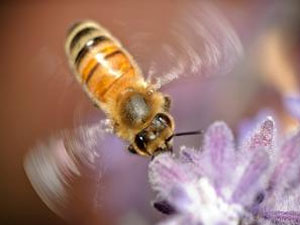Mercury Cycling in Stream Ecosystems. 3. Trophic Dynamics and Methylmercury Bioaccumulation
时间:2009-04-19 阅读: 我要评论:
USGS, Tallahassee, FL.
, ‡USGS, Middleton, WI.
, §USGS, Menlo Park, CA.
,USGS, Boulder, CO.
Abstract
Trophic dynamics (community composition and feeding relationships) have been identified as important drivers of methylmercury (MeHg) bioaccumulation in lakes, reservoirs, and marine ecosystems. The relative importance of trophic dynamics and geochemical controls on MeHg bioaccumulation in streams, however, remains poorly characterized. MeHg bioaccumulation was evaluated in eight stream ecosystems across the United States (Oregon, Wisconsin, and Florida) spanning large ranges in climate, landscape characteristics, atmospheric Hg deposition, and stream chemistry. Across all geographic regions and all streams, concentrations of total Hg (THg) in top predator fish and forage fish, and MeHg in invertebrates, were strongly positively correlated to concentrations of filtered THg (FTHg), filtered MeHg (FMeHg), and dissolved organic carbon (DOC); to DOC complexity (as measured by specific ultraviolet absorbance); and to percent wetland in the stream basins. Correlations were strongest for nonurban streams. Although regressions of log[Hg] versus δ15N indicate that Hg in biota increased significantly with increasing trophic position within seven of eight individual streams, Hg concentrations in top predator fish (including cutthroat, rainbow, and brown trout; green sunfish; and largemouth bass) were not strongly influenced by differences in relative trophic position. Slopes of log[Hg] versus δ15N, an indicator of the efficiency of trophic enrichment, ranged from 0.14 to 0.27 for all streams. These data suggest that, across the large ranges in FTHg (0.14−14.2 ng L−1), FMeHg (0.023−1.03 ng L−1), and DOC (0.50−61.0 mg L−1) found in this study, Hg contamination in top predator fish in streams likely is dominated by the amount of MeHg available for uptake at the base of the food web rather than by differences in the trophic position of top predator fish.
View: Full Text HTML | Hi-Res PDF | PDF w/ Links
| 美国科研人员在油气废水中发现新污染物 |
| 《ES&T》:中科院发现当前海洋POPs主要污染来源 |
| PLOSOne:中国科学家发现新型超富硒植物—壶瓶碎米荠 |
| 英国科学家研制出首款可用尿液充电手机 |
| 氧化石墨烯具有去除放射性污染的巨大潜力 |
| 《Environmental Health Perspectives》:养猪场恶臭为致病“元凶” |
特别声明:本文转载仅仅是出于传播信息的需要,版权归原作者所有,并不意味着代表本网站观点或证实其内容的真实性; 如其他媒体、网站或个人从本网站转载使用,须保留本网站注明的“来源”,并自负版权等法律责任; 作者如果不希望被转载或者联系转载稿费等事宜,请与我们接洽:service#environmentor.cn(请将#改为@)。
来源: 作者: (环境人 Environmentor.Cn)





